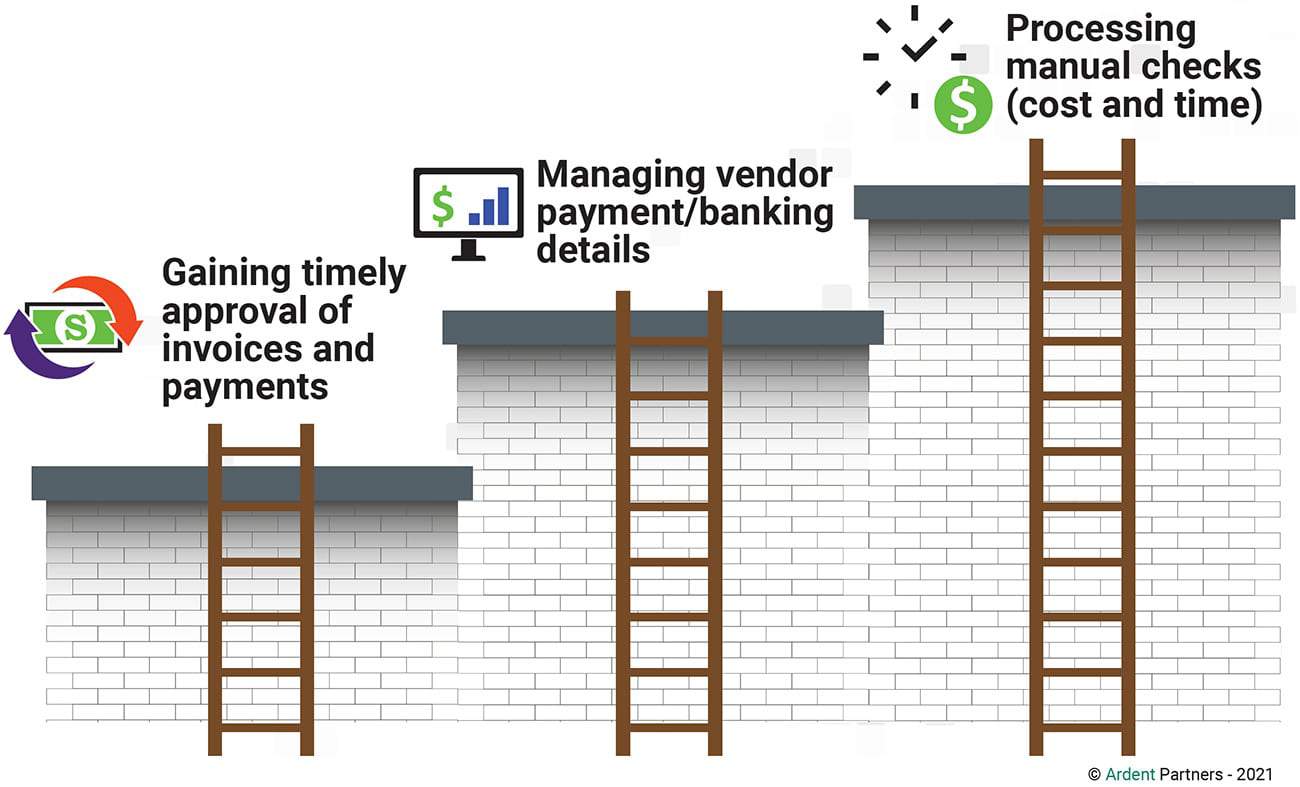Ways payment automation improves your AP processes
Corcentric

In the simplest terms, payment automation eliminates the burden of manual tasks and human intervention across the payment process. By automating electronic payments and transfers in real-time from your bank into the bank account(s) designated by suppliers and vendors, the entire payable process is paperless, streamlined, and accelerated. This boosts cost savings while removing the potential errors and risks of manual payment processing (like check fraud), check runs, and mailing paper checks.
Streamlining payment automation is also critical to accelerating cash flow and improving supplier relationship management. This is true during the normal course of business, but in times of major business disruption, such as the global pandemic, keeping the invoicing and payments process moving seamlessly will have a lasting impact on an organization. In fact, according to Ardent Partners’ Accounts Payable Metrics that Matter in 2021 report, 53% of businesses surveyed altered how and when they paid suppliers.
This puts the Accounts Payable department and AP processes under a financial microscope. While it sounds potentially stressful, it’s actually an ideal time for AP teams to show their true value with the help of payment automation software, or put a fine edge on a business case for how investing in a payment automation solution will optimize accounts payable operations and positively impact the company as a whole.
Top B2B payment challenges in 2021

Source: Ardent Partners’ Accounts Payable Metrics that Matter in 2021
What is payment automation?
Any payment software solution or technology tool an organization leverages to automate vendor, supplier, and third-party paying is considered payment automation. Automated payment methods include EFT (electronic funds transfer), ACH payments (automated clearinghouse), wire transfer, virtual cards, and more.
Companies implement payment automation to optimize and improve the payable process. Accounts payable automation solutions as a whole are designed to streamline and accelerate every step from PO (purchase orders) to invoicing, receiving reports, three-way match, and finally payments, integrating with ERP systems and accounting systems.
As you can see in the diagram below, payment automation improves functionality across the entire payments workflow, incorporating the approval process for better speed.
What an automated payment system looks like:
How does payment automation work?
There are a number of steps and actions involved in the payment process, from data integration to verification and approvals. What payment automation does, broadly speaking, is process payment data and complete the requirements for initiating the actual payments without the need for manual intervention.
A critical component of automated payments involves invoicing and invoice processing. Invoices generally arrive to an organization in a variety of formats – paper, pdf, electronic, etc. All the data on those invoices needs to be captured, integrated, and verified. For paper invoices, this is most often done through OCR (optical character recognition) or other technology. With electronic invoices, or e-invoices, this task is part of the AP automation process.
Once captured, the invoice data is compared against purchase orders and receipts (the aforementioned three-way match) and either approved for payment or submitted for review if there are discrepancies or exceptions.
Where payment automation proves highly beneficial in making the AP process more efficient is through ACH verification. This bank account-to-bank account financial transfer is fast and cost-effective, but really only if a supplier or third-party’s verified bank account information is already stored and ready to access. Payment automation solutions include this functionality.
How does payment automation improve AP processes?
If speed, efficiency, and compliance are the name of the game for AP departments, then payment automation has to play a critical role in this “last mile” of the procure-to-pay process. Here is what automated payments bring to the table:
Increased efficiency
With payment automation software, critical third-party data and documents can be organized and routed to relevant parties without the need for manual processes, reducing (or even eliminating) instances of human error. Not only does payment automation reduce costly mistakes like duplicate vendor payments and overpayments, invoices are processed faster and more accurately. This real-time processing increases handling capacity at even small or medium companies, while mitigating late payments, increasing rebates and early payment discounts, and reducing processing costs.
Cost savings
By reducing late payments and the subsequent fees and ill-will, automating payments adds to a Procurement organization’s spend control arsenal. Electronic payments, whether ACH, EFT, wire transfer, or virtual card, give AP teams real-time visibility over payment status, and are also much more cost effective than paper checks. They also go a long way toward eliminating payment fraud and other risks from paper-based payment methods.
Improved supplier and vendor relationships
Supplier relationship management, especially during periods of business disruption, plays a key role in helping businesses maintain operations, be more competitive, and even boost innovation. Paying third parties faster and more accurately leads to better relationships and prevents the sometimes lasting damage that can be the result of inaccurate or late payments.
Fraud protection
You can’t manage what you can’t see, and for the most part you can’t really see what’s going on in a manual, paper-based payments process. Payment automation provides AP teams with the complete transparency and 360º visibility that is necessary to spot potential red flags and issues in the making, before they become costly errors.
Using a payment automation solution to improve your business
Automating payments helps to eliminate the expense, time commitment, and errors associated with manual payments, as well as the delays in approval times. As part of a larger AP automation strategy, integration with other systems ensures that supplier details and other information from POs and invoices is accurate and verifiable, increasing efficiency and reducing exceptions.
Payment automation solutions can also be an advantage in securing early vendor payment discounts, boosting vendor relationships while reducing the incidence of late fees. By significantly improving the efficiency and effectiveness of the AP department and processes, not to mention autonomy and continuity, payment automation is a “must have” if a business wants to maintain optimized cash flow and control costs.